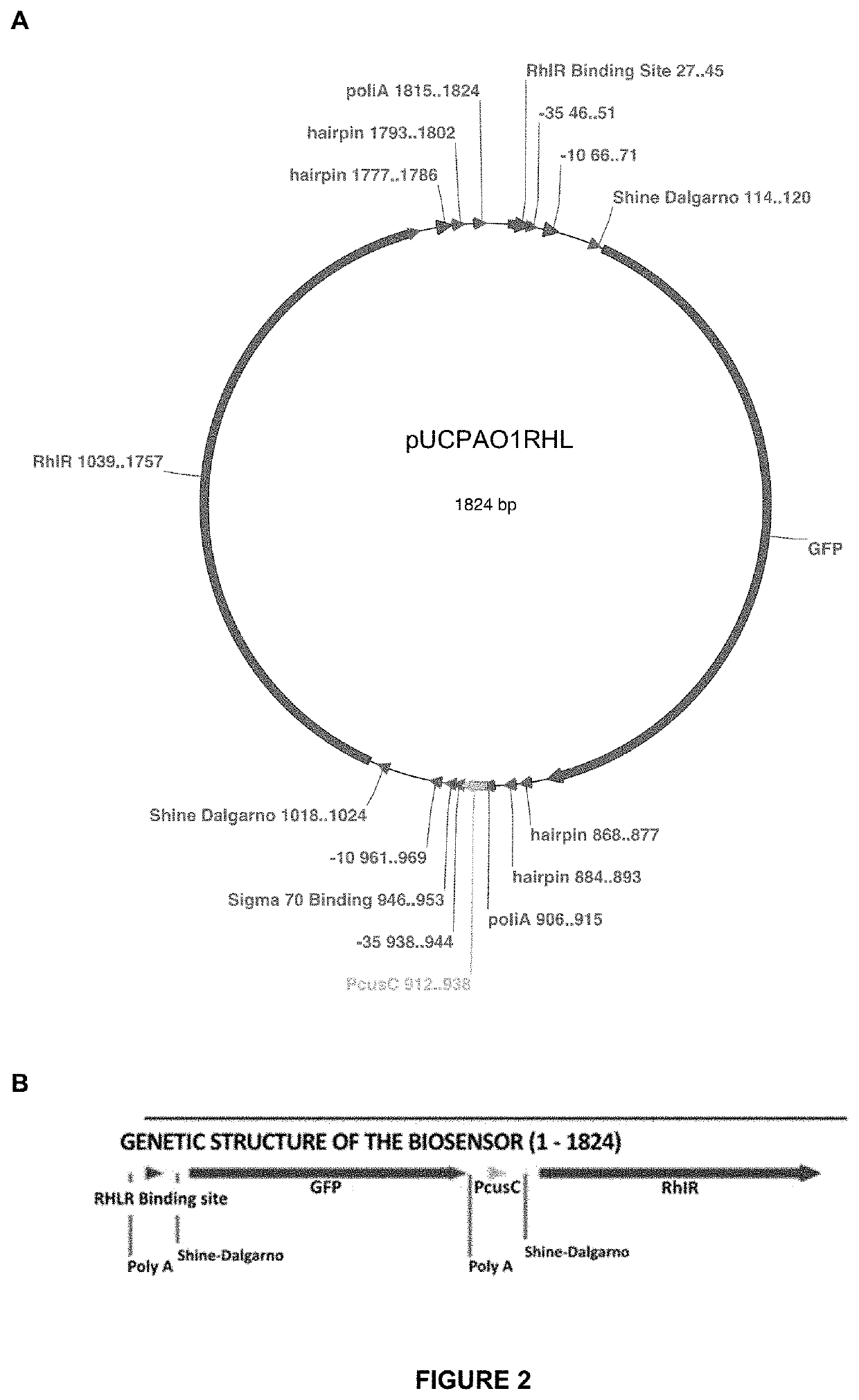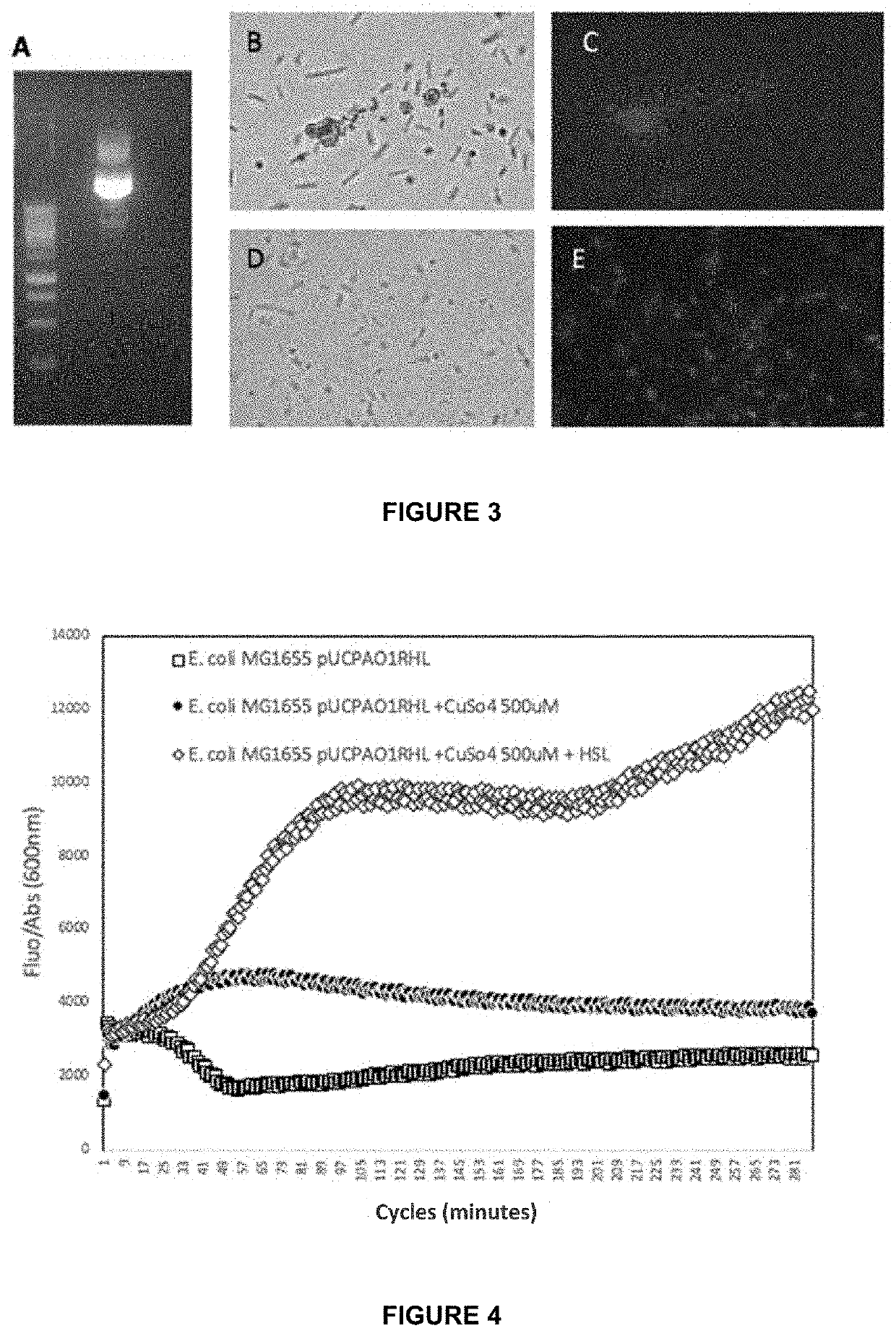Gene construct and biosensor for the rapid detection of ahl molecules and the pathogenic bacteria that produce same
- Summary
- Abstract
- Description
- Claims
- Application Information
AI Technical Summary
Benefits of technology
Problems solved by technology
Method used
Image
Examples
examples
[0068]1. DNA Sequences Included in the Gene Construct of the Invention
[0069]The selection of regulator sequences containing promoter sites of response to copper and RhlR regulator protein (able to respond to the cytoplasmic presence of chemical signals involved in quorum sensing) was performed from data obtained from database platforms such as Prodoric (http: / / www.prodoric.de), (Münch, R., Hiller, K., Barg, H., Heldt, D., Linz, S., Wingender, E. Jahn, D. (2003) PRODORIC: prokaryotic database of gene regulation. Nucleic Acids Res. 31, 266-269), Ecocyc (https: / / ecocyc.org) (Keseler et al. 2017, “EcoCyc: reflecting new knowledge about Escherichia coli K-12”, Nucleic Acids Research 45:D543-50), BioCyc (https: / / biocyc.org), BPROM (http: / / www.softberry.com / berryphtml?topic_=ann2_ann3&no_menu=on), NCBI, and Pseudomonas (pseudomonas.com).
[0070]2. Design and Collection of the Gene Construct and the Biosensor Cell of the Invention.
[0071]As previously mentioned, the gene construct of the inven...
PUM
 Login to View More
Login to View More Abstract
Description
Claims
Application Information
 Login to View More
Login to View More - R&D
- Intellectual Property
- Life Sciences
- Materials
- Tech Scout
- Unparalleled Data Quality
- Higher Quality Content
- 60% Fewer Hallucinations
Browse by: Latest US Patents, China's latest patents, Technical Efficacy Thesaurus, Application Domain, Technology Topic, Popular Technical Reports.
© 2025 PatSnap. All rights reserved.Legal|Privacy policy|Modern Slavery Act Transparency Statement|Sitemap|About US| Contact US: help@patsnap.com



